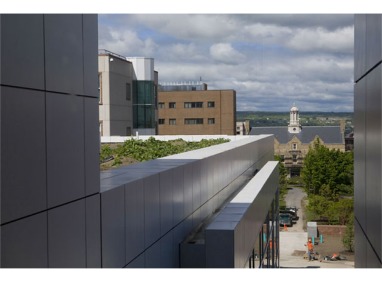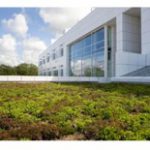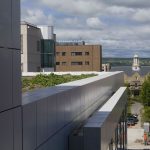
Additional Resources
See the Green Buildings Weill Hall? LEED Gold page here. Read the Weill Hall “Green Construction and Operations” case study at the Cornell University Life Sciences website here and the Oct. 10, 2008 ChronicleOnline article “By going green, Weill Hall meets the gold standard” here. Read about all of Cornell’s green building at their Cornell Sustainable Campus page. Learn about Motherplants in The Greenroof Directory here and contact them for further project info.
“The $162 million, 263,000-square-foot Weill Hall is one of the most ambitious facility projects in Cornell’s history, and one of the nation’s premiere life sciences facilities. Key residents include Joan and Sanford I. Weill Institute for Cell and Molecular Biology and theDepartment of Biomedical Engineering. Weill Hall is expected to earn Cornell’s first Leadership in Energy and Environmental Design (LEED) gold certification from the U.S. Green Building Council. The construction site, materials, design, building practices, and maintenance systems all play a part in this rigorous and prestigious rating,” (Cornell Life Sciences, see below).”It is connected via underground tunnels to the Corson-Mudd Halls, the Biotechnology Building, and Plant Sciences Building on the Ag Quad to form the largest life science research and education complex in New York State. The LEED process ensured incorporation of green elements into its design and construction,” (Cornell Sustainable Campus, see below).
“Highlights of Weill Hall’s green leadership include:”Two living ?green roofs? reduce rainwater runoff, reduce heating and cooling costs, and filter airborne pollutants and carbon dioxide. The two green roofs will hold approximately 31,000 sedum plants. Highly efficient plumbing fixtures and a gray-water reclamation system reduce the building’s wastewater generation by over 41%, or 450,000 gallons per year, compared with a standard building,” (Cornell Sustainable Campus).
 Greenroofs.comConnecting the Planet + Living Architecture
Greenroofs.comConnecting the Planet + Living Architecture






